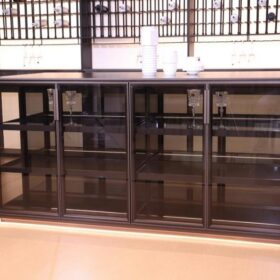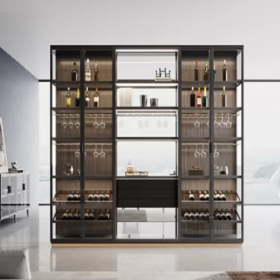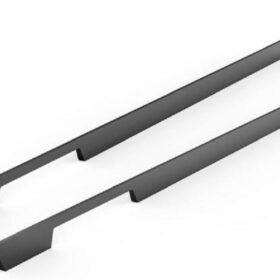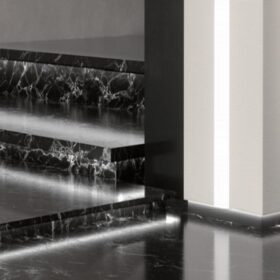Understanding the Mechanisms of Cabinet Pull Handles
The humble cabinet pull handle, often overlooked in home design, plays a crucial role in the functionality and aesthetics of any kitchen or bathroom. Understanding the mechanisms behind these handles not only enhances their usability but also allows for informed decisions when selecting and installing them. This article delves into the intricate workings of cabinet pull handles, providing a comprehensive understanding of their different aspects.
Mounting Mechanisms
Cabinet pull handles can be mounted using various mechanisms, each with its own advantages and disadvantages.
– Through-Hole Mount: This method requires drilling a hole directly through the cabinet door or drawer front. Screws or bolts are then passed through the hole and tightened to secure the handle. It is a robust and durable mounting option, but it can leave visible holes on the exterior of the cabinet.
– Surface Mount: Surface-mounted handles are attached to the surface of the cabinet using screws or adhesives. They do not require drilling through the cabinet, making them easier to install and allowing for more flexibility in placement. However, they may be less durable than through-hole mounts and can become loose over time.
– Inset Mount: Inset mounts involve recessing the handle into the surface of the cabinet, creating a flush and streamlined look. This method requires precise cutting and installation, but it provides a sophisticated and seamless finish.
Types of Handles
Cabinet pull handles come in a wide range of shapes, sizes, and materials. The most common types include:
– Bar Pulls: These are long, slender handles that extend across the entire width of the cabinet. They are a versatile option that complements both traditional and contemporary designs.
– Knobs: Knobs are small, round handles that are typically used on smaller cabinet doors and drawers. They offer a more decorative touch and can be found in a variety of styles.
– Cup Pulls: Cup pulls have a recessed handle that allows for easy gripping. They are often used on larger cabinets and provide a comfortable and spacious grip.
– Edge Pulls: Edge pulls are mounted on the edge of cabinet doors or drawers, providing a discreet and minimalist look. They are a popular choice for modern and handleless kitchen designs.
Materials and Finishes
Cabinet pull handles can be made from a variety of materials, including:
– Metal: Metal handles, such as brass, stainless steel, and aluminum, are durable, versatile, and available in a wide range of finishes.
– Wood: Wooden handles offer a warm and natural look. They are less durable than metal handles but can be stained or painted to match any decor.
– Ceramic: Ceramic handles are moisture-resistant and come in a variety of colors and patterns. They can add a touch of elegance and sophistication to cabinets.
– Acrylic: Acrylic handles are lightweight, clear, and durable. They provide a modern and transparent look, making them well-suited for contemporary designs.
Considerations for Selection
When selecting cabinet pull handles, consider the following factors:
– Cabinetry Style: The handle design should complement the style of your cabinetry. Traditional cabinets may require ornate handles, while modern cabinets can benefit from sleek and minimalist options.
– Usage: Choose handles that are comfortable to grip and suitable for the intended use. For example, cup pulls may be more suitable for large cabinets that require a spacious grip.
– Material and Finish: The material and finish of the handles should match the overall aesthetic of the kitchen or bathroom. Consider durability, moisture resistance, and the cleaning requirements of different materials.
-
2024-11-29Top Trends in Modern Kitchen Cabinet Pulls for 2024
-
2024-11-28The Ultimate Guide to Modern Kitchen Cabinet Pulls- Materials, Styles, and Tips
-
2024-11-27Elevate Your Kitchen Design with These Must-Have Modern Cabinet Pulls
-
2024-11-26Sleek and Stylish- The Best Modern Kitchen Cabinet Pulls for a Contemporary Look










